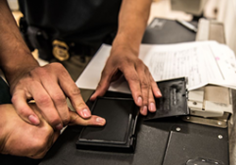ICE leads trade-based money laundering investigations.
Trade-based money laundering (TBML) is the process of disguising criminal proceeds through trade to legitimize their illicit origins. TBML, rather than being a single activity, refers to a variety of schemes used together to disguise criminal proceeds, which can involve moving illicit goods, falsifying trade documents, and misrepresenting trade-related financial transactions with the purpose of integrating criminal proceeds.
Criminal and terrorist organizations frequently exploit global trade systems to move value around the world by employing complex and sometimes confusing schemes associated with legitimate trade transactions. It is estimated that annual trade-based money laundering exceeds billions of dollars and is growing each year.
ICE established the Trade Transparency Unit to identify global TBML trends and conduct ongoing analysis of trade data provided through partnerships with other countries' trade transparency units. One of the most effective ways to identify instances and patterns of TBML is through the exchange and subsequent analysis of trade data for anomalies that would only be apparent by examining both sides of a trade transaction.
The unit is formed when ICE and any of the United States trading partners agree to exchange trade data for the purpose of identifying comparison and analysis. Using state-of-the-art software and proven investigative techniques, the unit can easily identify previously unknown transactions.
To help analyze the data, the ICE has developed a specialized computer system called the Data Analysis & Research for Trade Transparency System. Containing both domestic and foreign trade data, the system allows users to see both sides of a trade transaction, making it transparent to both countries. This investigative tool has been proven to be effective in identifying international trade anomalies and financial irregularities indicative of TBML, customs fraud, contraband smuggling, and even tax evasion.
ICE initiated the Trade Transparency Unit concept in Washington, D.C., in 2004 and subsequently established foreign Trade Transparency Unit partnerships with several countries.
Additionally, the ICE Trade Transparency Unit also works with inter-agency partners and international organizations such as the Financial Action Task Force to bring awareness to this global issue.
As the network of trade transparency units grows, so will the open exchange of trade data between all participating countries. This will play an increasingly important role in thwarting money laundering and transnational crime, including international organized crime and terrorism.













